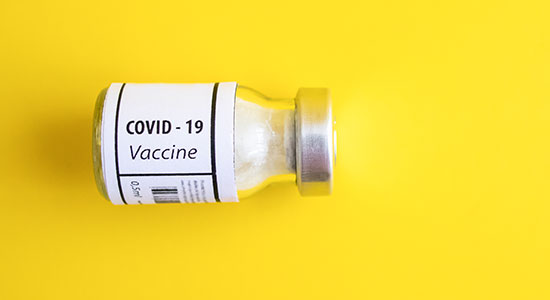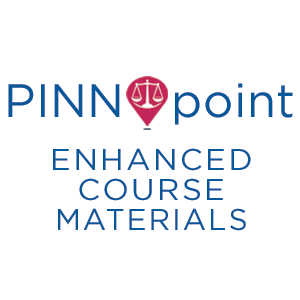
The novel coronavirus that causes the disease called COVID-19 was first identified in December 2019 and now has spread around the world. Since the COVID-19 outbreak began, researchers have been working to develop and distribute a COVID-19 vaccine.1 To speed research and development, the U.S. government provided an estimated $10 billion to those trying to develop COVID-19 vaccines under an initiative it dubbed “Operation Warp Speed.”2 The U.S. government also allowed the U.S. Food and Drug Administration (FDA) to accelerate its standard vaccine-approval process to allow for rapid distribution and use of COVID-19 vaccines.3 These vaccines now are being distributed to healthcare providers and administered to the public.
Vaccination is an essential component of the public health plan to combat the COVID-19 pandemic. However, vaccination, like other governmental measures to protect against a communicable disease, exposes fundamental tensions between public health and individual rights.
Recent polling shows that many people are reluctant to take a COVID-19 vaccine for various reasons, including the accelerated nature of the development of the vaccine and concerns about vaccines generally.4 It is estimated that one-third to one-half of the U.S. population may decline to take approved COVID-19 vaccines.5 As a result, public health officials have begun public relations campaigns to encourage COVID-19 vaccination and might even be considering whether compulsory COVID-19 vaccination programs are needed to restore public health and economic stability.
This article discusses the existing authority of Wisconsin public health officials regarding mass vaccination, as well as the circumstances under which individuals may object to vaccination requirements.
Legal Framework for Public Health Vaccination Efforts
Under the 10th Amendment to the U.S. Constitution, the power to address public health emergencies generally is held by the states, not the federal government.6 More than a century ago, the U.S. Supreme Court decided the seminal case on state power to respond to a public health crisis, Jacobson v. Commonwealth of Massachusetts.7 In Jacobson,the Court upheld the constitutionality of a state law authorizing a municipal order requiring all inhabitants to be vaccinated against a communicable disease and specifying a fine for noncompliance. The Court recognized the necessity of state public health regulations, including vaccines, and the utilitarian aspect of rules protecting the many at the expense of the few.8 Consistent with Jacobson, other courts, using modern judicial-review standards, have rejected more recent objections to mandatory vaccination laws.9
 Marguerite Z. Hammes, Georgetown 2002, practices with O’Neil, Cannon, Hollman, DeJong & Laing S.C., Milwaukee. She provides general counsel support to clients operating in regulated industries, including healthcare technology start-up companies, and also assists clients with provider-payor disputes and other healthcare matters.
Marguerite Z. Hammes, Georgetown 2002, practices with O’Neil, Cannon, Hollman, DeJong & Laing S.C., Milwaukee. She provides general counsel support to clients operating in regulated industries, including healthcare technology start-up companies, and also assists clients with provider-payor disputes and other healthcare matters.
 Grant C. Killoran, Minnesota 1989, practices with O’Neil, Cannon, Hollman, DeJong & Laing S.C., Milwaukee. He is the past chair of the firm’s Litigation Practice Group and represents clients in Wisconsin state and federal courts, and courts throughout the country, with a focus on complex business and healthcare disputes.
Grant C. Killoran, Minnesota 1989, practices with O’Neil, Cannon, Hollman, DeJong & Laing S.C., Milwaukee. He is the past chair of the firm’s Litigation Practice Group and represents clients in Wisconsin state and federal courts, and courts throughout the country, with a focus on complex business and healthcare disputes.
The Wisconsin Department of Health Services (DHS) has the authority to “promulgate and enforce rules or issue orders” and also to “authorize and implement all emergency measures necessary to control communicable diseases.”10 The authority of the DHS and local health departments over public health matters overlaps but is not always congruent. The DHS is empowered to promulgate rules to specify required services of local health departments, including services to meet current public health objectives.11 Local health rules must not conflict with, but can be more stringent than, state DHS regulations.12 When state and local health officials properly exercise authority, their actions must be “reasonable and necessary for the prevention and suppression of disease.”13
Although the DHS has the power to implement a statewide immunization program, it generally does not have authority to mandate vaccination for the general public, except in school and day-care settings or in a declared state of emergency.14 Wisconsin’s governor has the authority to issue an executive order declaring a public health emergency and designating the DHS to respond to it.15 A public health emergency includes the “occurrence or imminent threat of an illness or health condition” that is believed to be caused by a novel biological agent and poses a high probability of a large number of deaths or serious or long-term disability.16
During a state of emergency, the DHS can “[o]rder any individual to receive a vaccination,” require those who decline vaccination to isolate or quarantine, and impose fines or imprisonment for noncompliance.17 In the event of a “substantial outbreak” of a contagious disease, the DHS also may order schools and child-care centers to exclude all students who are not immunized (including those having a proper waiver), until the outbreak subsides.18 However, the law allows an individual to claim exception from such vaccination on three different grounds: 1) health reasons, 2) religious reasons, and 3) personal conviction or “conscience.”19
Despite the available statutory framework for the DHS to use vaccination to combat disease, the novel nature of COVID-19 makes specific implementation of any COVID-19 vaccination program somewhat unclear. The DHS is required to cooperate with local health officers to use disease control measures that are “consistent with current epidemiologic practice.”20 But because the virus that causes COVID-19 was discovered only recently, there presently is no established epidemiologic practice for the DHS to rely on when developing COVID-19 plans.21
Clinical Development of New Vaccines in the United States
The preapproval clinical development of a new vaccine in the United States takes place in three phases.
Phase I: A vaccine is given to a small group of people.
Phase II: A vaccine is given to people similar to those individuals who will get the new vaccine (that is, people of similar gender, age, and condition).
Phase III: A vaccine is given to many people so that it can be studied for safety and effectiveness.
After completion of this process, a new vaccine is subject to regulatory review and approval by the FDA’s Center for Biologics Evaluation and Research, which is responsible for regulating vaccines.
Phase IV: Approved vaccines being given to the public are monitored.
Smallpox Vaccination Cases
Cases addressing vaccination orders during the smallpox pandemic in the United States more than a century ago may provide some guidance to the DHS and other public health officials on how to implement and maintain COVID-19 vaccine programs today.
When considering the various smallpox vaccination programs established to combat that disease, courts found the presence of a contagious disease in a local community is central to the judicial analysis of whether vaccination requirements are “reasonable and necessary.”22 Courts also found that orders mandating smallpox vaccination (or eliminating vaccination waivers) were more likely to be upheld if they are limited in time to a state of emergency in a local community.23
Courts varied in their interpretations of whether a smallpox outbreak in a nearby community was sufficient to support vaccination requirements, however.24 And courts found that the expected duration of an outbreak, and the effectiveness of quarantine as an alternative to vaccination, also were relevant to judicial evaluation of a smallpox vaccination program or mandate.25
Conclusion
The mass vaccination of individuals for COVID-19 is just beginning and remains filled with uncertainty. The medical and scientific issues involving COVID-19 vaccines and the logistics of implementing mass COVID-19 vaccination programs are complex. States currently have limited doses of the vaccines needed to inoculate hundreds of millions of people against COVID-19, requiring state leaders to make difficult decisions regarding vaccine allocation and prioritization.26 The effectiveness of COVID-19 vaccines, the available vaccine supply, and the number of people willing to be vaccinated will affect the ability of public health COVID-19 vaccine programs to lead to public “herd immunity” from the disease.
Wisconsin law governing public health emergencies exists to guide governmental officials, public health experts, physicians, the public, and the courts in addressing the legal issues such as those that will arise relating to COVID-19 vaccines. But the SARS-CoV-2 coronavirus (and the vaccines for it) are new. The novel nature of COVID-19, coupled with the substantial increase in interstate and global travel since the court decisions regarding vaccination issued during the smallpox pandemic over a century ago, may lead to a number of new and differing public health measures to combat the spread of the new disease.
Wisconsin’s existing statutory framework gives public health officials the authority to develop and implement programs to address COVID-19 vaccination. However, judicial review of the proper scope and use of this authority likely will hinge on the nature and scope of the programs, as well as the interpretation of case law from many years ago related to a different disease and statutory terms that have not yet been applied to COVID-19.
COVID-19 – PINNpoint Enhanced Course Materials
 Learn more about legal issues associated with COVID-19 with PINNpoint Enhanced Course Materials, the newest product line from State Bar of Wisconsin PINNACLE®. A range of employment- and business-related topics is covered, including human resources considerations from the Families First Coronavirus Response Act and returning to work, employee benefits, and counseling employers in a pandemic.
Learn more about legal issues associated with COVID-19 with PINNpoint Enhanced Course Materials, the newest product line from State Bar of Wisconsin PINNACLE®. A range of employment- and business-related topics is covered, including human resources considerations from the Families First Coronavirus Response Act and returning to work, employee benefits, and counseling employers in a pandemic.
PINNpoint materials offer attorneys a way to quickly and efficiently learn about a discrete legal topic by providing supplemented course materials from previously aired PINNACLE-produced webinars. Course materials are created by Wisconsin legal experts and include additional resources for added value. Prices start at just $20.
Visit wisbar.org/PINNpoint for more information.
Meet Our Contributors
What legal memory will still bring a smile to your face 20 years from now?
 While I fully expect to be long retired 20 years from now, I also expect my favorite legal memories will relate to the excellent colleagues I have had over my career. Sure, there will be fine memories about victories and professional achievements, interesting clients, judges and opposing counsel, and assorted litigation war stories, but I think my best memories will be of those attorneys who served as mentors to me, those attorneys with whom I worked to develop strategies to serve clients who entrusted their interests to us, and those attorneys who did not work at my firm but nonetheless were gracious enough to give me solid advice. These attorneys have made the practice of law rewarding (and even fun) for me and, almost certainly, memories of them will make me smile 20 years from now.
While I fully expect to be long retired 20 years from now, I also expect my favorite legal memories will relate to the excellent colleagues I have had over my career. Sure, there will be fine memories about victories and professional achievements, interesting clients, judges and opposing counsel, and assorted litigation war stories, but I think my best memories will be of those attorneys who served as mentors to me, those attorneys with whom I worked to develop strategies to serve clients who entrusted their interests to us, and those attorneys who did not work at my firm but nonetheless were gracious enough to give me solid advice. These attorneys have made the practice of law rewarding (and even fun) for me and, almost certainly, memories of them will make me smile 20 years from now.
Grant C. Killoran, O’Neil, Cannon, Hollman, DeJong & Laing S.C., Milwaukee.
How did you find your way to your current position?
 After managing the complex medical needs of my children and engaging in substantive patient-advocacy work in the hospital setting, I desired to use my practical knowledge of the healthcare industry in the practice of law. A couple of wonderful attorneys and fathers at my children’s school introduced me to my firm and presented me with a unique opportunity to work with the firm.
After managing the complex medical needs of my children and engaging in substantive patient-advocacy work in the hospital setting, I desired to use my practical knowledge of the healthcare industry in the practice of law. A couple of wonderful attorneys and fathers at my children’s school introduced me to my firm and presented me with a unique opportunity to work with the firm.
Marguerite Z. Hammes, O’Neil, Cannon, Hollman, DeJong & Laing S.C., Milwaukee.
Become a contributor! Are you working on an interesting case? Have a practice tip to share? There are several ways to contribute to Wisconsin Lawyer. To discuss a topic idea, contact Managing Editor Karlé Lester at (800) 444-9404, ext. 6127, or email klester@wisbar.org. Check out our writing and submission guidelines.
Endnotes
1 The clinical development of a new vaccine in the U.S. takes place in three phases (see the accompanying sidebar). See Vaccine Testing and the Approval Process, CDC (last visited Dec. 10, 2020).
2 Helen Branswell et al., Operation Warp Speed Promised to Do the Impossible. How Far Has It Come?, Stat (Sept. 8, 2020).
3 See Stephen Hahn et al., An Update and Behind the Scenes: FDA’s Coronavirus Treatment Acceleration Program, FDA (July 14, 2020).
4 See Kwame Opam, Americans More Willing to Take a Coronavirus Vaccine, Gallop Poll Suggests, N.Y. Times (Nov. 22, 2020); Jared S. Hopkins, For Many, Convincing Them to Get a Vaccine Will Be Tough, Wall Street J.(Aug. 29-30, 2020).
5 See Memo. from Nat’l Governor Ass’n Ctr. for Best Practices to Governor’s Offices (Aug. 3, 2020).
6 See Gibbons v. Ogden, 22 U.S. 1, 205 (1824) (recognizing the “power of a State, to provide for the health of its citizens”).
7 Jacobson v. Commonwealth of Mass.,197 U.S. 11 (1905).
8 Id. at 24-31.
9 See, e.g., Workman v. Mingo Cnty. Bd. of Educ., 419 F. App’x 348, 355-56 (4th Cir. 2011) (declining to conclude that access to schooling is fundamental right that would require court to apply strict scrutiny to constitutional challenge to vaccination law); Phillips v. City of N.Y., 775 F.3d 538, 542-43 (2d Cir. 2015) (denying substantive-due-process challenge to a vaccination law, citing Jacobson). However, the Supreme Court recently might have minimized the effect of Jacobson, by its decision in Roman Catholic Diocese of Brooklyn v. Cuomo, 141 S. Ct. 63 (2020). There, the Court enjoined an executive order by Gov. Andrew Cuomo establishing certain occupancy limits to combat the spread of COVID-19. The Court noted in its per curium opinion that “[m]embers of this Court are not public health experts, and we should respect the judgment of those with special expertise and responsibility in this area … even in a pandemic, the Constitution cannot be put away and forgotten.” Id. at *3. The Roman Catholic Diocese case does not involve vaccination, but Jacobson’s current relevance was discussed inthe opinion. In his concurrence, Justice Gorsuch stated that Jacobson “hardly supports cutting the Constitution loose during a pandemic.” Id. at *5 (Gorsuch, J., concurring). He noted that people affected by the mandatory vaccination order at issue in Jacobson could avoid taking the smallpox vaccine by paying a small fine or identifying a basis for exemption and stated that Jacobson’simposition on individual rights was “avoidable and relatively modest” and “easily survived rational basis review, and might even have survived strict scrutiny, given the opt-outs available to certain objectors.” Id. at *6.He concluded by calling Jacobson a “modest decision.” Id. Chief Justice Roberts, on the other hand, quoted a line from Jacobson in his dissent in Roman Catholic Diocese, stating that “[o]ur Constitution principally entrusts ‘[t]he safety and the health of the people’ to the politically accountable officials of the States ‘to guard and protect.’“ Id. at *9 (Roberts, C.J., dissenting) (quoting Jacobson, 197 U.S. at 38). He concluded that “it is not clear which part of this … quotation today’s concurrence finds so discomforting.” Id.
10 Wis. Stat. § 252.02(4), (6). State agency “rules” must be promulgated by a formal rulemaking process outlined in Wis. Stat. ch. 227 (Administrative Procedure and Review).
11 See Wis. Stat. § 251.20 (Rulemaking).
12 See Wis. Stat. § 251.04(3).
13 Wis. Stat. §§ 252.03(2), 250.04(1); see also Wis. Stat. § 252.19; Wisconsin Legis. v. Palm, 2020 WI 42, 391 Wis. 2d 497, 924 N.W. 2d 900 (clarifying powers of Wisconsin governmental officials to address public health emergencies).
14 Compare Wis. Stat. § 252.04(1), with Wis. Stat. § 252.04(2)-(3) & Wis. Admin. Code §§ DHS 144.03-05. Although the U.S. Surgeon General is authorized to make and enforce federal regulations to prevent the spread of communicable diseases under the Public Health Service Act of 1944, 42 U.S.C. § 264(e), federal standards cannot supersede state law, including a state’s religious or personal-conviction waivers. See Richard Hughes IV, Vaccine Exemptions and the Federal Government’s Role, Health Affairs (Mar. 21, 2019).
15 See Wis. Stat. § 323.10.
16 See Wis. Stat. § 323.02(16).
17 Wis. Stat. § 252.041(1)(a)-(b); see also Wis. Stat. §§ 252.06(4), 252.25; Wis. Admin. Code § DHS 145.06(4) (allowing state officials to require persons believed to have a contagious medical condition to participate in defined program of treatment and to cease and desist from conduct constituting threat to others).
18 Wis. Stat. § 252.04(7); Wis. Admin. Code § DHS 144.07(10).
19 Wis. Stat. §§ 252.041(1)(a)-(b), 252.04(2)-(3); Wis. Admin. Code § DHS 144.03(4). All 50 states allow for medical exemptions to mandatory vaccinations, 45 states also allow for religious exemptions, and 15 states allow for additional philosophical or personal-belief exemptions. See State School and Childcare Vaccination Laws, CDC, (last visited Dec. 10, 2020).
20 See Wis. Admin. Code § DHS 145.05(4).
21 If a mandatory vaccination program were implemented, it almost certainly would be challenged. While the result of any such challenge would depend on the nature of the program challenged and the particular facts and circumstances of the case, the outcome likely would hinge on various considerations, including but not limited to whether the program is alleged to violate a constitutional right (for example, if religious-based waivers were eliminated), permits alternatives to vaccination (for example, social distancing, masking, or quarantine) or follows state administrative law requirements.
Recent Wisconsin decisions regarding COVID-19 have emphasized that – even during a public health emergency requiring a swift public health response – officials must act pursuant to authority expressly delegated by the legislature and observe the administrative rulemaking process if protective health measures generally are applicable to groups of citizens or throughout the state or locality. See, e.g., Palm, 2020 WI 42, 391 Wis. 2d 497.
22 Compare Jacobson, 197 U.S. at362 (upholding smallpox vaccination law when smallpox was prevalent in the city of Cambridge), with State v. Burdge, 95 Wis. 390, 70 N.W. 347, 351 (1897) (invalidating local health-board rule that excluded unvaccinated children from school during smallpox pandemic after noting that smallpox did not exist in the community).
23 See, e.g., State v. Zimmerman, 90 N.W. 783, 783 (Minn. 1902) (holding that power to mandate vaccination should be granted where there is an epidemic “and imminent danger of its spreading”); Potts v. Breen, 47 N.E. 81, 84 (Ill. 1897) (upholding vaccination law because such power is justified by the smallpox emergency and, “like the necessity which gave rise to it, ceases when the necessity ceases”); Blue v. Beach, 56 N.E. 89, 92, 96 (Ind. 1900) (upholding board of health’s power to order vaccination or exclusion of unvaccinated people from public spaces “where an exposure to smallpox is threatened” in city, while cautioning that mandatory vaccination order would have no force or effect after the emergency); Carr v. Board of Educ., 13 Ohio Dec. 430, 445 (Ohio Com. Pl. 1903) (stating that order permanently excluding unvaccinated children from schools “would be doubtless held to be unreasonable and beyond the power of the board”).
24 Compare Morris v. City of Columbus, 30 S.E. 850, 851 (Ga. 1898) (upholding vaccination law even though smallpox did not exist in local community but was present in nearby city and winter was approaching); Duffield v. School Dist., 29 A. 742, 743 (Pa. 1894) (upholding mandatory vaccination order issued by school board following notification of one case of smallpox in Williamsport because the disease “is and has been epidemic in many near-by cities”), with Carr, 13 Ohio Dec. at 438-39 (distinguishing cases such asBurdge in which courts invalidated local health orders because smallpox did not exist in their communities and citing Matthews v. School District No. 1, 86 N. W. 1036, 1038-39 (Mich. 1901), which invalidated compelled vaccination of students because smallpox was not found in Kalamazoo or its school district, despite being prevalent in some other parts of state and country, but noting that public health order may have withstood judicial scrutiny if it related to an outbreak in Kalamazoo).
25 See Carr, 13 Ohio Dec. at 439 (citing Matthews) (“epidemics never last long and the parent and child might very well say, if they desired, that they would absent themselves from school during the epidemic, and this could be done without their being lawbreakers”).
26 See Abby Goodnough & Jan Hoffman, “The Elderly vs. Essential Workers: Who Should Get the Coronavirus Vaccine First?” N.Y. Times (Dec. 5, 2020).
